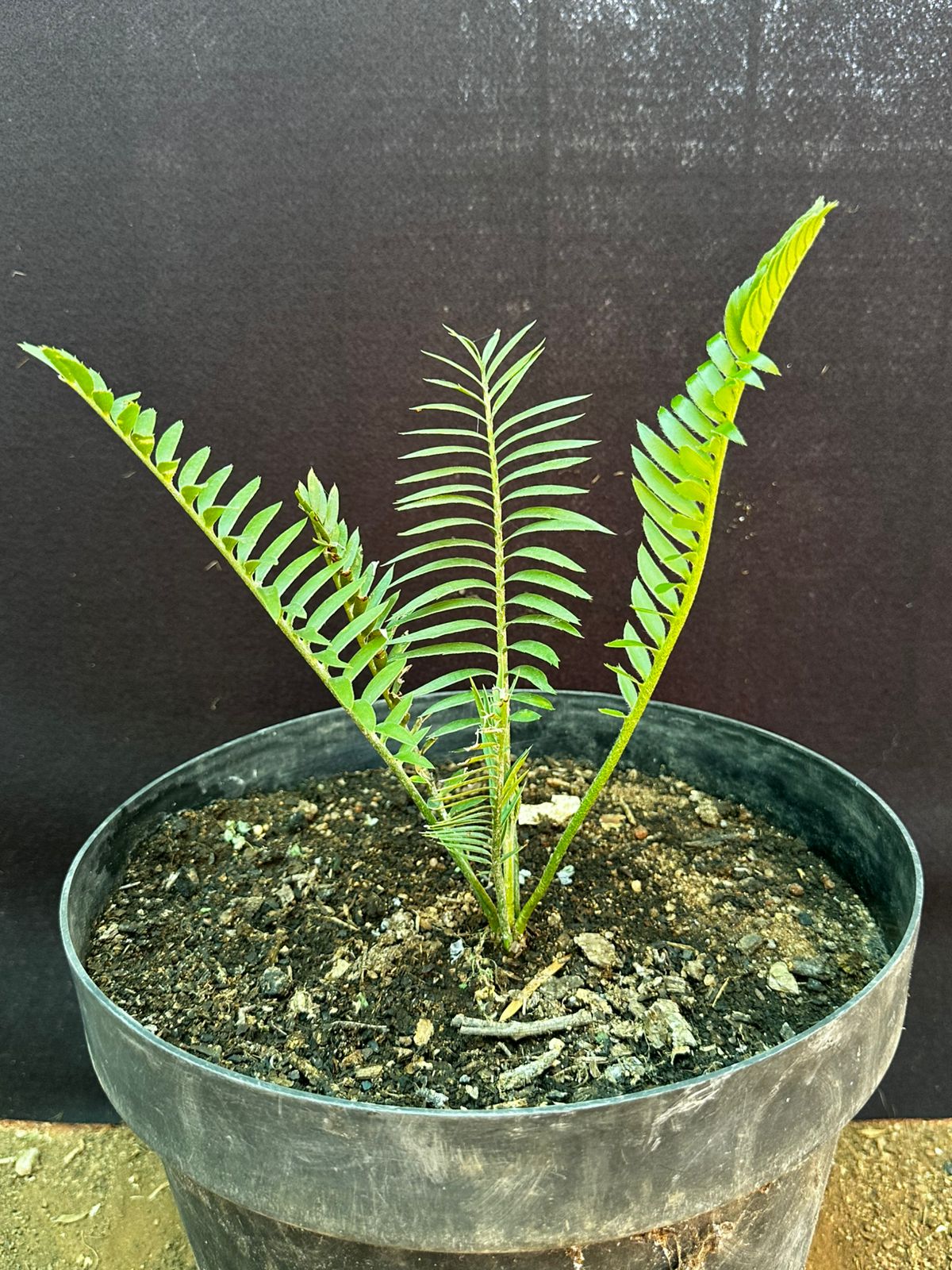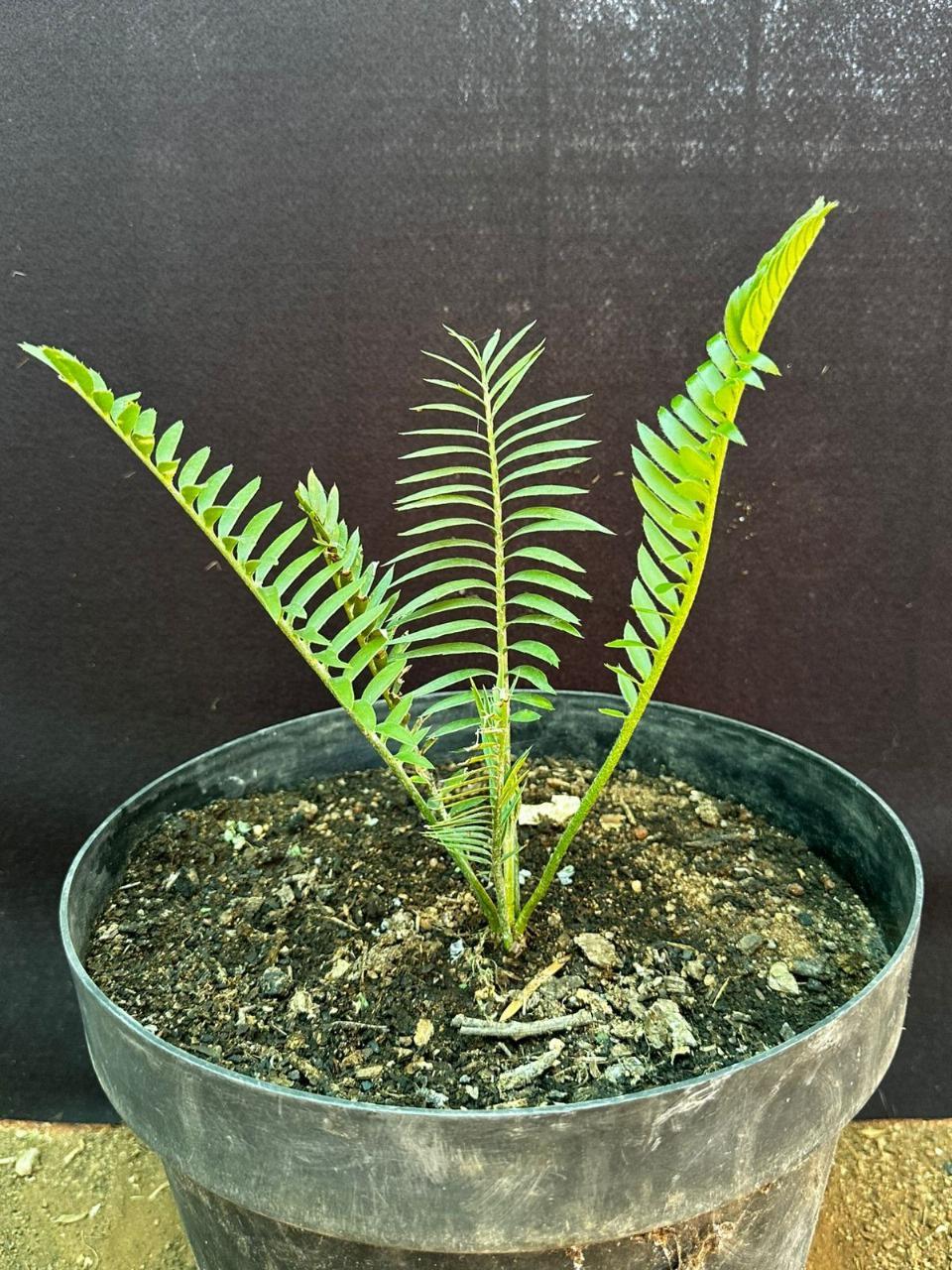

Encephalartos caffer
Encephalartos caffer, the Eastern Cape Dwarf Cycad, is native to South Africa’s Eastern Cape Province. Growing in coastal grasslands, it is known for its compact size and dense, leathery leaves. The species thrives in full sun and sandy soils and is highly adapted to the cold, wet winters of the region.
Cones
Both male and female cones of Encephalartos caffer are cylindrical, with female cones measuring 30 cm in length and 15-25 cm in diameter. The cones are green when young and turn a dull yellowish-green as they mature. Male cones are smaller, ranging from 20-30 cm in length and 6-9 cm in diameter. Each plant usually produces a single cone per season, and the seeds are bright red and prominently visible once the cones open. The scales of the cones are finely textured and distinct in their arrangement.
Leaves
The leaves of Encephalartos caffer are leathery and range from 40-90 cm in length, with leaflets measuring 5-8 cm in length. The leaflets are light green to olive-green when young, but turn yellowish with age. Unlike E. ngoyanus, the rachis is straight, though slightly curved toward the base of the plant. The leaflets are covered with fine, whitish wool, which falls away as they mature. The edges of the leaflets have 2-3 small teeth on each margin, and the leaflets grow close together along the rachis, forming a compact and dense leaf structure.
Stems
growing more than 12-25 cm above ground. In some cases, the plant may branch, producing multiple stems from a single base. The tuberous roots are much thicker than those of most other cycads, resembling carrots in shape and structure. These thick roots help anchor the plant in sandy soils and store moisture during dry seasons. The stems are densely covered in leaf scars, which provide additional protection to the growing point from environmental factors such as fire or extreme cold.